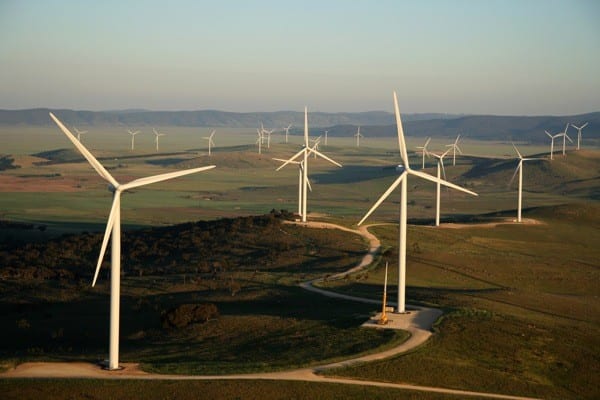ASX-listed renewables company Infigen Energy has reported a jump in profit, earnings and revenue for the year ended 30 June 2016 (FY16), and is optimistic about further growth in 2017, despite the market for renewable energy off-take agreements, or PPAs, in Australia remaining “very thin.”

After a year of mixed wind conditions, volatile electricity prices and higher prices for large-scale renewable energy generation certificates (LGCs), Infigen has reported a net profit after tax of $4.5 million, and earnings (EBITDA) of $120.2 million, a 44 per cent increase on FY 2015. Revenue for the year increased by 29 per cent to $173.2 million.
The company said the results had come off the back of better wind conditions in New South Wales, improved turbine availability at Capital and Woodlawn wind farms, and improved network availability at Alinta and Lake Bonney wind farms, counterbalanced by lower wind conditions in South Australia and Western Australia.

The increase in revenue was attributed to higher LGC and electricity prices, higher revenue from hedging activities and higher production, partially offset by lower compensated revenue. And with a simplified business – after the sale of its US assets – a stable capital structure, and a more supportive policy environment, the company says it is well positioned for “profitable growth.”

But in a Q&A following the results announcement, Infigen CEO and managing director Miles George said that securing a power purchase agreement for wind energy in Australia was “still very difficult”, with the market for a 10 year off take contract “still very thin”.
“Why is there not more contracting? From the large obligated parties … they seem to have a strategy at the moment of just simply passing through the higher costs to their customers,” George said in answer to a question from an analyst. “And that is reflected in … more customers coming to people like us for their supply.”
It is also reflected in the growing spread between contract prices and merchant prices, George said.

“We have half of our production is merchant, so we are selling to markets and the big obligated parties, one of them in particular,” he said, noting that in the current market, the rate of return for merchant deals could be “substantially higher” than for PPAs.
Indeed, the results presentation says the “outlook for LGC and electricity spot market prices is substantially higher than reported PPA prices, providing an investment signal for some merchant opportunities.” Although the company points to “expectations of a likely shortfall in LGC supply over the medium term.”

George also noted that the company, which has traditionally focused on wind energy development, was increasingly going to split its focus between wind and large-scale solar PV, which he said had been identified as both a threat and an opportunity for the company. On the opportunity side, he said, was the potential to co-locate solar with existing wind assets.
“We have currently a larger proportion of our development pipeline is in wind than in solar” he said. “We have a couple of solar projects in here and are looking for more.”

And while George also stressed that large-scale solar PV was not yet competitive with wind in Australia, he said he expected this would change in the not-too distant future, and that in the meantime there were “some extraneous factors”, including grant funding from ARENA, that could make it competitive.
On electricity prices, George said that number of factors had been driving changes in that market at that moment, including limited competition, and the shift towards a gas dominated market – particularly in South Australia.
“Gas is going to set the (electricity) price,” George said, “and that’s reflected in those forward prices,” he said.
“SA power prices have historically been significantly affected by gas power costs, and are now totally driven by that fact, except for the tempering effect of the Victorian interconnector,” he said.
George noted that Infigen had also spent $1.7 million over 2015-16 on hedging, to protect the company from to unpredictable frequency and ancillary services (or FCAS) costs and was likely to spend even more than that in 2017, depend on how volatile the market was and how long it took to complete the interconnector upgrade.
“With Northern closed the AEMO has changed its protocol for procuring Ancillary services,” George said. “They now procure FCAS only from SA regional providers… (and) that change of protocol has introduced some pretty significant volatility in a market where you only have one or two market players with power.”










